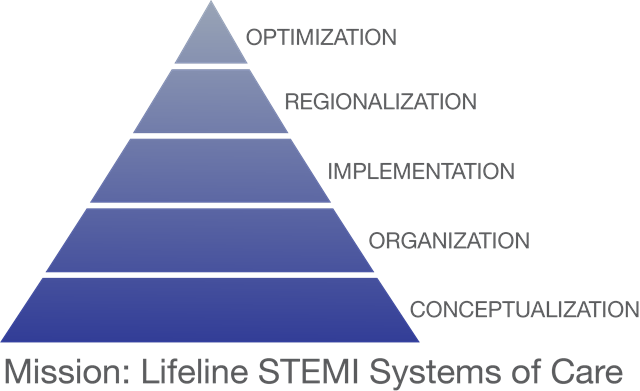Systems of Care Overview and Implementation Strategies
Why Mission: Lifeline®?
- To decrease the mortality and morbidity of the estimated 785,000 Americans who will have their first heart attack each year and the 470,000 Americans who will have a recurrent heart attack.
- To collaboratively coordinate care among 911 dispatch, EMS, interfacility transport teams, and the destination hospitals

- To aid in meeting AHA/TJC Primary Heart Attack and Acute Heart Attack Ready Certification Requirements
- To Save Lives
Mission: Lifeline Systems of Care are:
A patient-centered, multidisciplinary team(s) focused on expediting appropriate emergency care for patients with STEMI and are:
- Supported by AHA Quality Outcomes, Research and Analytics Staff
- Improved through participation in Mission: Lifeline regional reports, powered by Get With The Guidelines - Coronary Artery Disease
- Focused on evidence based guidelines for timely reperfusion
- Regionally coordinated
Systems of Care principles can also be applied to other time-sensitive conditions such as stroke and out-of-hospital cardiac arrest.
Mission: Lifeline Stages of STEMI Systems of Care Implementation

| Conceptualization |
|
| Organization |
|
| Implementation |
|
| Regionalization |
|
| Optimization |
|
Although the stages of STEMI Systems of Care Implementation are shown as hierarchical, the process is always in a dynamic state and a system of care can therefore move up or down levels based upon the ever-changing state of each participant and overall landscape of the system of care.





